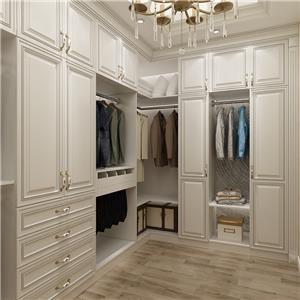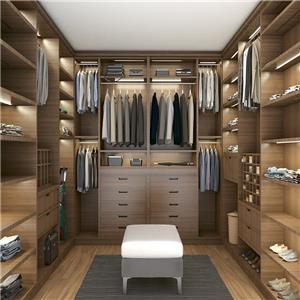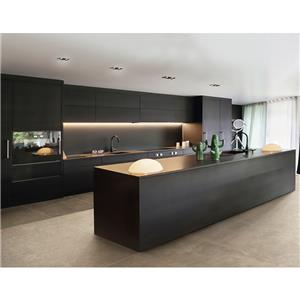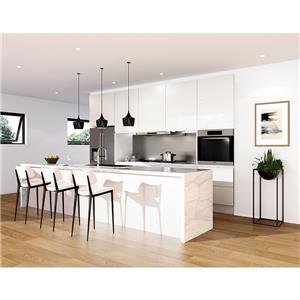Integrated development practice and prospects of e-commerce transformation and new retail model in the cabinet industry
Integrated development practice and prospects of e-commerce transformation and new retail model in the cabinet industry
I. Introduction
The traditional sales model of the kitchen cabinet industry mainly relies on offline physical stores, such as home furnishing stores, self-operated stores, franchise agents, etc. Challenges faced include the transformation of online consumption brought about by the rise of e-commerce, the growing demand of consumers for personalization and one-stop services, the decline in price competitiveness caused by the long traditional sales chain and high costs, and the industry's own marketing The model urgently needs innovation to adapt to the digital era and solve problems such as information asymmetry and service lag.
The rise of e-commerce and new retail models in the cabinet industry stems from the rapid development of information technology and profound changes in consumer shopping habits. The traditional sales model is limited by geography, time and information dissemination, and cannot meet the needs of modern consumers for convenient, personalized and transparent services. With its all-weather and borderless characteristics, the e-commerce model breaks the time and space barriers for cabinet sales. Through rich online display, comparison and purchase channels, it greatly broadens sales channels, reduces costs and improves transaction efficiency.
The new retail model deeply integrates the advantages of online and offline, predicts consumer demand through data analysis, and provides customized products and seamless service experience, allowing the cabinet industry to reconstruct the commercial value chain and enhance brand competitiveness. E-commerce and new retail models not only help enterprises transform and upgrade, but also play an important role in optimizing resource allocation, strengthening brand effects, and improving customer satisfaction.
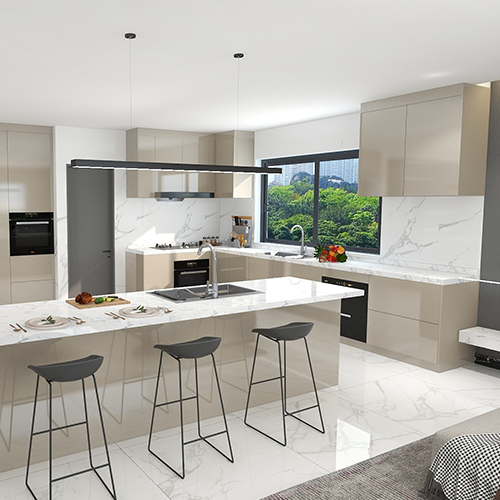
II. The development history and current situation of e-commerce in the cabinet industry
Early stage of e-commerce: Cabinet companies are trying to connect to the Internet, opening online stores and online marketing
Well-known brands such as Shengxiang, Nature, and TATA Wooden Doors have already tried their hand at e-commerce, and have entered mainstream e-commerce platforms such as Tmall and JD.com. The initial results include broadening sales channels, reaching a wider group of potential consumers, increasing brand exposure, promoting sales growth, and also accumulating valuable online operation experience for the company.
However, the development of cabinet companies in the e-commerce field is not smooth sailing and faces many bottlenecks. On the one hand, the conflict between online and offline price systems has become a major challenge. How to balance the distribution of interests between online promotions and offline dealers and avoid internal competition has become crucial. On the other hand, cabinet products are highly customized and service-oriented. It is difficult to fully convey the physical texture through online display, and the complexity of after-sales service is higher than that of ordinary products. This puts forward higher requirements for logistics, distribution, installation and after-sales. In addition, the cost of online traffic is rising year by year. How to efficiently convert traffic and retain customers to achieve sustained profitability has also become a problem that cabinet companies must solve on the road to e-commerce.
The rise and application of O2O model
The integrated online and offline sales model has gradually evolved into a standard format in the kitchen cabinet industry. Companies such as JD.com and Red Star Macalline use e-commerce platforms to launch value-added services such as appointment-based on-site measurement and personalized design. After consumers browse products and compare choices online, they can make an appointment with a professional to measure the size of the kitchen space with one click, and then submit personalized design requirements through the online platform. The merchant will provide customized solutions based on the data, from purchase to design to installation. The seamless connection greatly improves the shopping experience and service efficiency.
Content marketing and the rise of social e-commerce
Social media, live streaming and short video platforms have become important channels for cabinet product sales. They break the traditional sales model and greatly enhance the visibility and influence of cabinet products through vivid content display, real-time interactive communication and social fission communication. force. Live streaming shortens consumers’ decision-making path, enhances purchasing trust and satisfaction, and drives sales surge. The short video platform shows the design highlights and usage scenarios of cabinet products in a short and quick way, stimulating the desire to buy. At the same time, word-of-mouth communication and opinion leader recommendations on social media have effectively shaped the brand image and broadened market coverage. The use of these new media tools not only enriches the marketing methods of cabinet companies, but also provides consumers with a more three-dimensional and diverse shopping experience, thus profoundly changing the sales pattern of the cabinet industry.
4. Content marketing and the rise of social e-commerce ①Vertical e-commerce focuses on furniture sales in a certain segment, such as the official website of a professional cabinet brand. It is characterized by product specialization and highly targeted services. It can provide in-depth customization and professional knowledge guidance, but its audience is relatively narrow and it is difficult to obtain traffic. big.
②Third-party furniture platforms such as Taobao and JD Home Channel have rich and diverse products, a large user base, and high market coverage and credibility. However, competition is fierce and personalized services may not be as good as vertical e-commerce.
③Professional building materials websites gather many brands and products, focusing on industry information and procurement services, making it easier for consumers to make one-stop price comparisons. However, they may not be as good as brand vertical e-commerce in terms of personalized customization and in-depth services, and the quality is uneven.
Generally speaking, different channels have their own advantages and disadvantages: vertical e-commerce provides professional and in-depth services, third-party platforms rely on huge traffic and diverse choices, and professional building materials websites attract users with their industry concentration and information resource advantages.
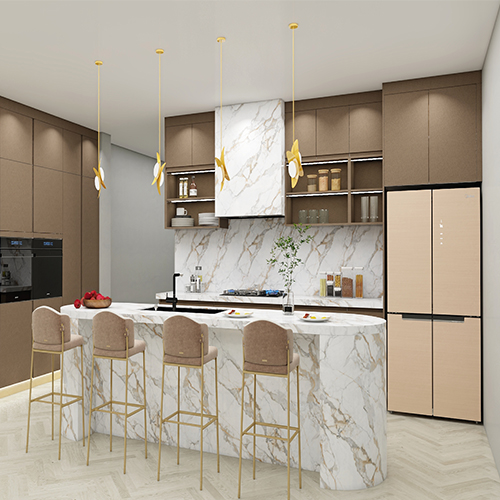
III. Exploration and practice of new retail models in the cabinet industry
1. Digital exhibition hall and virtual experience
①Virtual reality (VR) and augmented reality (AR) technologies have played an important role in cabinet display. For example, the IKEA VR Experience application launched by IKEA allows users to design kitchens in a virtual reality environment, change the color and perspective of cabinets, and simulate the experience of users of different heights. Some cabinet brands use AR technology to integrate virtual cabinet models into real space, allowing consumers to visually preview the actual effect of the cabinets at home before purchasing, achieving an interactive roaming experience and effectively improving the accuracy and satisfaction of purchasing decisions.
②The combination of online design tools and DIY customization services allows users to design kitchen cabinet styles directly on the web or app, select colors, materials, layout and other elements, and visually preview the customization effect. This model gives users a high degree of participation and creativity, meets personalized needs, simplifies the customization process, and improves the efficiency of purchasing decisions. At the same time, real-time rendering technology and intelligent auxiliary functions such as intelligent cutout and AI filters have greatly improved the design experience, allowing even users without professional design background to easily create satisfactory works, thus significantly improving the cabinet industry. User experience and service quality.
2. Data-driven precision marketing and personalized customization
Big data analysis can accurately depict user portraits and understand the diversity and dynamic changes of customer needs through the mining and analysis of massive data such as user behavior, consumption records, and search keywords. Based on this, cabinet companies can refine their target markets and optimize product design to meet the individual needs of different consumers for functions, appearance, materials, etc. At the same time, big data analysis can also reveal market trends and competitive situations, help companies formulate targeted marketing strategies, such as precise advertising, price strategy optimization, customer service improvement, etc., and effectively improve sales conversion rates and customer satisfaction.
3. Omni-channel integration and seamless shopping experience
The purpose of building an integrated online and offline service system is to integrate online platform and physical store resources, starting from consumers placing orders and paying online, to automatic scheduling in the backend system, rapid picking and packaging in offline warehouses, real-time intelligent logistics distribution, and finally The professional team comes to install and debug seamlessly. Through advanced information technology, the order status is tracked throughout the process to ensure transparent and timely service, right up to the quick response and proper solution of after-sales service, thereby improving the customer purchasing experience and enhancing brand trust and loyalty.
4. Intelligent supply chain and logistics system
Under the new retail model, the value of efficient logistics networks and warehousing automation technology is mainly reflected in three aspects: improving supply chain efficiency, reducing operating costs, and optimizing customer service experience. The efficient logistics network ensures that the time from leaving the factory to delivering kitchen cabinet products to customers is greatly shortened and the cargo turnover rate is improved through precise scheduling and rapid distribution. Warehousing automation technologies, such as automated three-dimensional warehouses and intelligent sorting systems, can effectively improve storage space utilization, reduce manual errors, achieve accurate inventory management, and respond to changes in market demand immediately. The combination of the two allows cabinet companies to respond to consumers' personalized needs faster and improve delivery speed, thereby taking advantage of the fierce market competition.
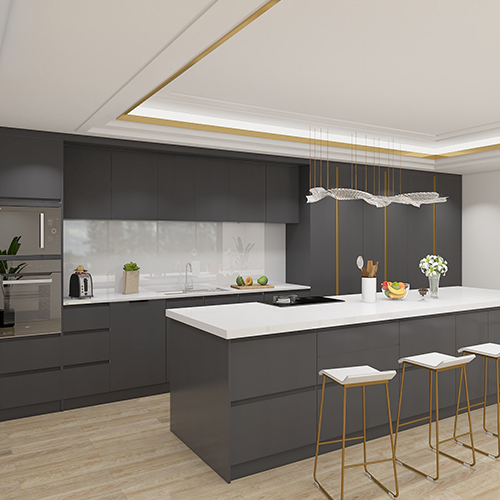
IV. Challenges and countermeasures of e-commerce and new retail models in the cabinet industry
1. Consumer trust and product quality assurance
To solve the pain point of online sales that cannot be experienced in person, companies can use 3D modeling and VR/AR technology to simulate real-life experiences, allowing consumers to intuitively experience the appearance, materials and layout of kitchen cabinets online. At the same time, product features are explained in detail through complete product parameters, high-definition pictures and video displays. The standardized process covers online consultation, appointment for on-site measurement, personalized design, online confirmation of drawings, factory customized production, delivery and installation, etc. to ensure uniform service quality. On this basis, relying on powerful databases and design software, we can flexibly meet customers' individual needs, combine online sales with customized services, and enhance user experience.
2. Balance between service standardization and personalization
To solve the pain point of online sales that cannot be experienced in person, companies can use 3D modeling and VR/AR technology to simulate real-life experiences, allowing consumers to intuitively experience the appearance, materials and layout of cabinets online. At the same time, product features are explained in detail through complete product parameters, high-definition pictures and video displays. The standardized process covers online consultation, appointment for on-site measurement, personalized design, online confirmation of drawings, factory customized production, delivery and installation, etc. to ensure uniform service quality. On this basis, relying on powerful databases and design software, we can flexibly meet customers' individual needs, combine online sales with customized services, and enhance user experience.
3. Technology investment and talent training
Enterprises can increase technology investment and cultivate cross-border talents through the following measures: First, set up special funds for technology research and development and the introduction of advanced production equipment to promote intelligent manufacturing and information management; second, organize regular training courses and combine online and offline education resources to teach Internet thinking and home design knowledge, and improve employees’ digital literacy; secondly, encourage employees to participate in domestic and foreign seminars and project practices, and keep up with the industry’s cutting-edge technology and market trends; finally, carry out industry-university-research cooperation with universities and scientific research institutions to Cultivate interdisciplinary talents and ensure that the talent team has both solid professional skills and Internet innovation awareness and practical capabilities.
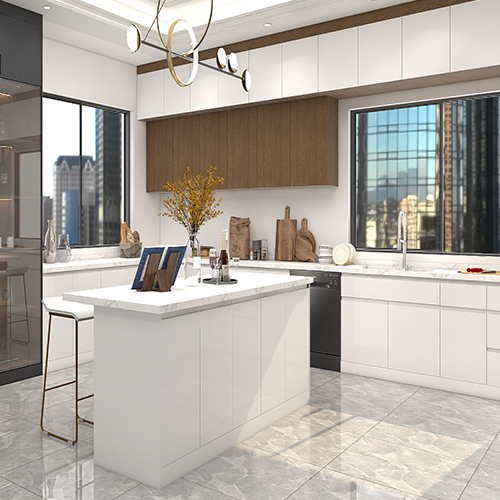
V. Future trends and prospects
1. Deep integration of smart home and cabinet products
The Internet of Things and AI technology will play a revolutionary role in the new retail model of the cabinet industry and promote the explosive growth of the smart cabinet market. Internet of Things technology will realize the interconnection between cabinets and other home equipment, and provide a convenient and efficient use experience through intelligent identification, automatic adjustment and other functions. AI technology helps with personalized design and intelligent recommendations, accurately matching products and services based on users’ living habits. In addition, the monitoring and early warning system equipped with smart cabinets can realize intelligent control such as food preservation and energy consumption management, greatly improving the quality of life. In the future, smart cabinets powered by the Internet of Things and AI are expected to become a new growth point in the home furnishing market, reshape the industry ecology, and drive in-depth innovation in new retail models.
2. Possible applications of community group buying and C2M models
The model of social economy and direct consumer-driven production is highly feasible in the cabinet industry. Enterprises can collect user needs through social platforms, initiate crowdfunding designs, allow consumers to participate in product development and design, and implement on-demand customization and pre-sale models. The participation of community fans can not only effectively reduce inventory risks, but also enhance brand influence through word-of-mouth communication. In addition, through real-time communication and feedback mechanisms, companies can quickly iterate products to meet rapid changes in the market. At the same time, we build a consumer community, provide exclusive services and discounts, increase user stickiness, and promote the development of the cabinet industry in a more consumer-centered direction.
3. Industry integration and ecological co-construction
Cabinet companies work closely with upstream and downstream enterprises in the home decoration industry chain, such as building alliances with real estate developers, decoration companies, home designers, etc. to share resources and data and implement cabinet layout planning from the house design stage. At the same time, enterprises access smart home platforms, integrate online and offline resources, and provide one-stop services from design, material selection, customization, distribution, installation to after-sales. By joining forces with e-commerce platforms, VR/AR technology is used to create an immersive shopping experience and achieve an effective connection between personalized needs and large-scale production. In addition, we have in-depth cooperation with relevant parties such as logistics and financial services to optimize supply chain management, ensure rapid response to market changes, and jointly build a new home retail ecosystem with consumers as the core.
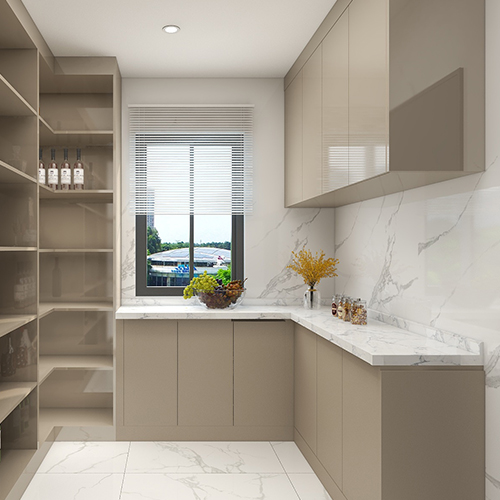
VI. Conclusion
The value of e-commerce and new retail models in the kitchen cabinet industry is mainly reflected in expanding sales channels, accurately capturing consumer needs, optimizing service processes, and enhancing brand influence. Through e-commerce platforms, cabinet companies can break through geographical restrictions, reach a wider consumer group, use big data analysis to gain insight into market demand, and achieve personalized customization and precision marketing. The new retail model integrates online and offline to provide seamless design, purchase, distribution, installation and after-sales experience, greatly improving consumer satisfaction and purchase conversion rate.
In future development, kitchen cabinet companies should seize the following opportunities and coping strategies: first, strengthen digital transformation, invest in the research and development of intelligent design tools and VR/AR display technology to enhance the online shopping experience; second, integrate online and offline resources to build efficient logistics network and standardized service system; secondly, deepen the relationship with upstream and downstream partners in the home decoration industry chain to create a win-win new home retail ecosystem; finally, focus on talent training and technological innovation to enhance the company's capabilities in smart home, Internet of Things, etc. Competitiveness in emerging areas. At the same time, we should properly handle online and offline price conflicts, safeguard the interests of dealers, achieve harmonious coexistence of channels, and ensure that the company moves forward steadily in the new retail revolution.

